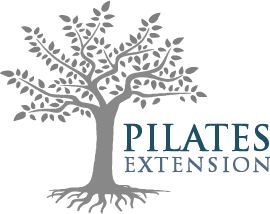What is Pilates?
Pilates is a low-impact method of exercise designed to connect the mind and body through movement. It emphasises quality of movement over quantity of repetitions, thereby harnessing the strength within the body to strive toward performing precise actions and sequences through resistance training. It enables you to develop or enhance your strength, flexibility and tone as well as to create awareness about posture and the effects this has on our body’s strengths and weaknesses as well as to improve balance and co-ordination. It is an extremely safe type of exercise that can be modified for almost every age and body type.
Pilates is special in that is always evolving and what makes it fantastic is that you get to evolve with it. Whether it is through progressing your practice from beginning stages or because of innovations within the industry. Contemporary Pilates is very much about continuing education of students and instructors meaning that we are all striving for perfection and are all on this journey together.
The Benefits of Pilates
Pilates is a system of exercise that balances and conditions the whole body and has a number of benefits. These may differ between people depending on why you are taking the classes and you will soon discover what they are for you, however, some of the main benefits that apply to most are that it:
- Creates body and postural awareness
- Enhances body alignment
- Improves strength, flexibility and tone
- Aids balance and co-ordination
- Enhances practice of other sports or exercises
- Builds endurance both physically and mentally
- Can aid in the relief of stress and tension
- Can correct poor muscular patterning within the body in order to avoid injury
The History of Pilates
Born in Germany in 1880, Joseph Pilates developed ‘Contrology’ which is the foundation of the exercises and system we know today as Pilates. As a child, he suffered from asthma, rickets and rheumatic fever and he began to use movement and exercise to rehabilitate himself. Through his dedication, he overcame these difficulties and continued to develop his system of exercise throughout his lifetime.
He moved to England in 1912 and at the beginning of World War 1 he was interned along with other German citizens who he trained and taught self-defence. There was a limited amount of space that they could use to perform these exercises in the camp and thus Pilates began to refine his system of exercise to enable maximum benefit for the body with minimum space and equipment. During his internment, he also worked in a hospital where he attached ropes and pulleys to hospital beds in order to provide rehabilitative resistance training to patients and this was the beginning of the development of the equipment that you see today in Pilates studios.
In the 1920s he immigrated to the United States and met his wife Clara on the journey there. They set up base in New York in a studio situated at the home of the New York City Ballet. Word began to spread through the dance world about the practice of ‘Contrology’ and its benefits, particularly for injury rehabilitation. The method’s popularity grew steadily and by the mid-1960s, it was spreading through the dance world across America.
Joseph Pilates passed away in 1967 and Clara continued his work at the “Pilates” studio in New York, and thus the name we know this method by was formed. After his death, students of his such as Romana Kryzanowska, Kathy Grant, Ron Fletcher, Carola Treir, Eve Gentry and Lolita San Miguel began to teach his method of exercise and open their own studios. Growth outside of the dance world was slow to begin with and probably only in the last 10-15 years has the method began to develop mass popularity as people have come to realise its many benefits for health and wellness in the modern world we live in.

